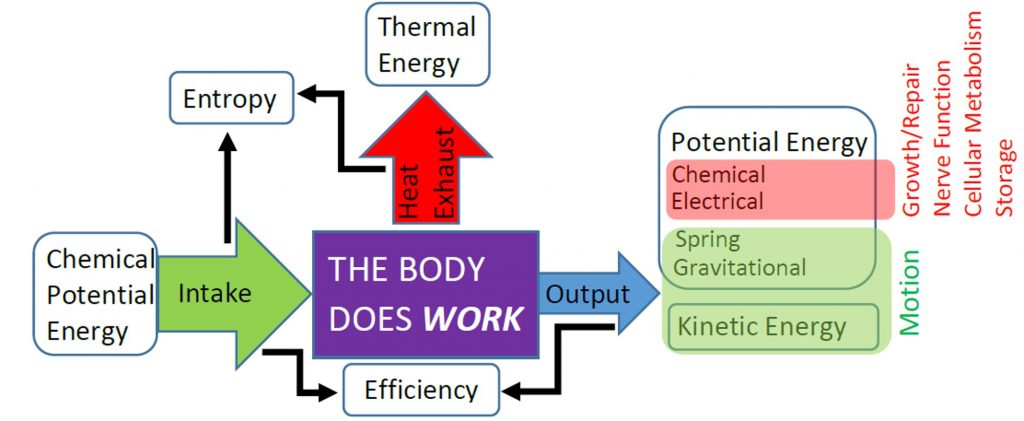2 The Purpose of This Texbook
In order to understand why living requires work, and exactly how you get that work done, we need to understand the concepts of work, energy, and entropy. These happen to be some of the most fundamental concepts in all of physics. This textbook will introduce you to these fundamental concepts by analyzing the functioning of your own body. Along the way we will also learn about other physics concepts that help us to understand how we move, respond to forces, sense changes to our environment, and manipulate objects.

A quantity representing the effect of applying a force to an object or system while it moves some distance.
A quantity representing the capacity of an object or system to do work.
A measure of energy dispersion in a system.

